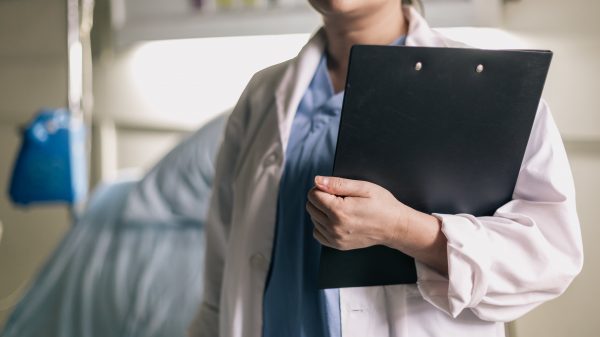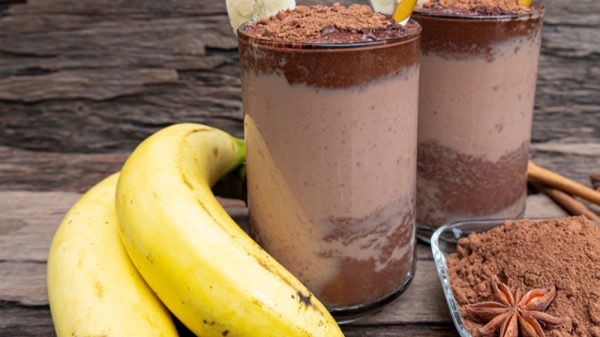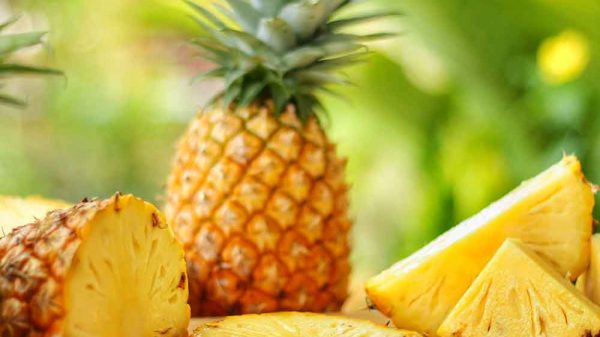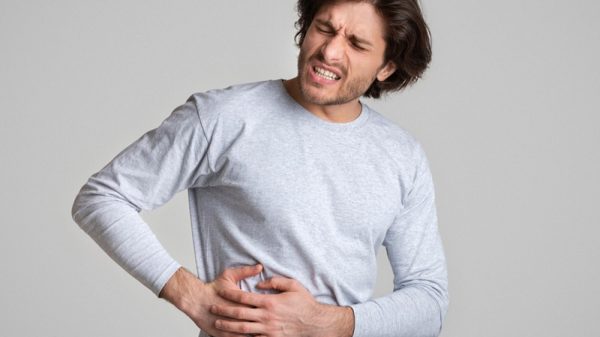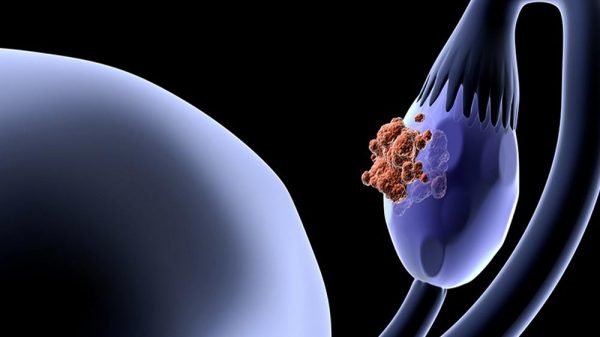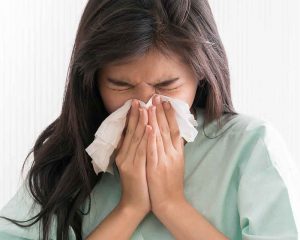If you’ve learned that you have an enlarged liver, you may be wondering what this means and if it’s reversible. You may also be wondering: is an enlarged liver dangerous? Here we address this question and go over common causes of an enlarged liver – especially fatty liver disease – as well as changes you can make to your diet and lifestyle to help you reverse it.
What Is Enlargement of the Liver?
An enlarged liver, also called hepatomegaly, is a condition that describes a larger than normal liver size. Generally, normal liver span is 7 centimeters for women and 10.5 centimeters for men, with 3 centimeters smaller or larger being within the normal range. (1)
Enlarged Liver Causes
Hepatomegaly is not a condition in itself, but rather a sign of another condition. If you have hepatomegaly, this likely means you have an inflamed liver as a result of an underlying disease.
Some of the most common causes of an enlarged liver are liver-specific diseases, including:
- Nonalcoholic fatty liver disease
- Alcoholic fatty liver disease
- Liver cirrhosis
- Viral hepatitis, like hepatitis C
In other cases, cancer and congestive heart failure may be the underlying cause of an enlarged liver. Always consult your doctor so he or she can assess possible causes, diagnose the underlying condition, and guide you on how to best resolve it. Throughout this article, we focus primarily on the enlarged liver as a result of fatty liver disease.
Why Does Fatty Liver Disease Cause an Enlarged Liver?
Fatty liver disease occurs when an abnormal number of fat cells collect in the liver. As more fat cells accumulate over time, fatty tissue develops throughout the liver, increasing its size.
Symptoms of Enlarged Liver from Fatty Liver Disease
In many cases, an enlarged liver causes no symptoms. In other cases, hepatomegaly causes symptoms like:
- Liver pain or tenderness, which can be felt in the upper right quadrant of your abdomen
- Abdominal pain
- Feeling full when eating, which may be caused by increased pressure on your stomach
- Nausea, loss of appetite
Other symptoms that may accompany hepatomegaly in more advanced cases of liver disease include:

How Is an Enlarged Liver Detected?
Liver function tests can reveal clues about how well the liver is doing its job. Other indicators of an inflamed liver include slightly elevated liver enzymes, particularly alanine transaminase (ALT) and aspartate transaminase (AST). ALT and AST are enzymes that catalyze metabolic reactions that are responsible for breaking down protein and amino acids into their bioavailable forms, to be shuttled throughout the body. When the liver is inflamed or injured – as is the case with fatty liver disease and cirrhosis – ALT and AST blood levels increase and are marked as abnormal on a routine blood test.
Certain medical conditions increase the risk of developing both fatty liver disease and an enlarged liver. These conditions include:
- Obesity
- Metabolic syndrome
- High cholesterol
- Insulin resistance
- Type 2 diabetes
- High blood pressure
- Heart disease
If you are at risk for developing an enlarged liver and are showing risk factors and indicators of fatty liver disease, a clinician may be able to feel whether or not your liver is enlarged through a physical examination. However, whether an enlarged liver can be detected through touch is highly dependent on a person’s weight, body structure, and distribution of adipose tissue. In some cases, it may be impossible to feel an enlarged liver. As a result, imaging technology allows a definite diagnosis of an enlarged liver. Common techniques used are computed tomography (CT) scans and ultrasounds. Even with advanced imaging techniques, determining whether the liver is enlarged or normal is a tricky endeavor, requiring in-depth analysis and volume measurements. (2)
Additionally, the extent of liver enlargement indicates the severity of the underlying disease. A dramatically swollen liver signifies a serious underlying condition, while a slightly swollen liver signifies a milder condition.
Complications Associated with an Enlarged Liver
An enlarged liver means that your liver is inflamed. In the case of fatty liver disease, having an enlarged liver in itself is not dangerous. However, the underlying liver condition leading to enlargement can become dangerous if left untreated. Fatty liver disease, whether a result of diet or alcohol, causes inflammation in the liver. Chronic inflammation impedes normal hepatic functioning, and liver cells eventually become damaged.
Over a long period of time, this damage and inflammation can lead to the formation of scar tissue throughout the liver, a process referred to as fibrosis. Normal liver cells are contained by a supportive exterior and characterized by a fluid interior. When fibrosis takes place, collagen and other compounds used in the supportive cell structures develop in excess.
Fibrosis, when left untreated, can ultimately lead to liver cirrhosis, a condition that describes the development of hardened scar tissue in the liver. A normal liver is soft in texture, and hardened tissue indicates the presence of damaged liver tissue that has become biologically dysfunctional. Liver cirrhosis, in the absence of a medical intervention, can ultimately lead to liver cancer, liver failure, and serious complications like hepatic encephalopathy. Severe complications like end-stage liver failure usually requires liver transplantation.
The Good News: You Can Reverse an Enlarged Liver Caused by Fatty Liver Disease
In order to help your liver return to its normal size, it is imperative to treat the causal conditions- nonalcoholic fatty liver disease and alcoholic fatty liver disease. If your enlarged liver is a direct outcome of fatty liver disease, the good news is that both conditions can be managed with lifestyle and diet changes to prevent the progression of fatty liver disease.
Managing Nonalcoholic Fatty Liver Disease to Reverse an Enlarged Liver
Nonalcoholic fatty liver disease can be managed with diet and lifestyle changes. Here are a few helpful tips for reversing fatty liver disease:
1. Eat Lots of Fruits and Vegetables
Fruits and vegetables contain high concentrations of antioxidants, which directly reduces liver inflammation in fatty liver disease. Compounds in fruits and vegetables – polyphenols – behave as antioxidants or free radical scavengers. These antioxidant compounds help to clear waste and damaging particles from your liver cells, allowing for your body to repair liver damage while reducing inflammation.
Additionally, the nutrients in fruits and vegetables also support your immune system. In turn, your natural cell-repairing mechanisms operate better and are able to support healing.
2. Consume High-Quality Protein
Our bodies utilize protein for all biological processes that are happening simultaneously throughout our bodies. Protein is necessary to facilitate all biochemical reactions, fortify cell structure, produce mood-regulating neurotransmitters, strengthen the immune system, carry out wound-healing mechanisms, support muscle growth, and support liver health. In order to support liver repair, getting enough high-quality protein is vital.
Protein from food sources provides the raw materials that the body needs to ensure that all processes are optimally functioning. When protein is consumed, the body metabolizes it to form amino acids – the building blocks or raw materials to create more proteins. Though consuming enough protein is important, it is even more critical to consume high-quality protein with ideal ratios of essential amino acids. Amino acids that are categorized as “essential” must be consumed from the foods we eat; the body is unable to synthesize them on its own. These essential amino acids include leucine, isoleucine, valine, histidine, lysine, methionine, tryptophan, and phenylalanine, and threonine.
Single food sources that contain ideal ratios of all amino acids include meat, dairy products, and soy protein. Some foods, on the other hand, don’t contain a complete essential amino acid profile. Foods with incomplete amino acid profiles are generally plant-based sources. For example, if you only ate whole-grain pasta for dinner, you would be missing out on the amino acid lysine. To create a complete essential amino acid profile with plant-based foods, strive to eat a variety of whole plant-based foods throughout the day. The ideal amounts of amino acids – combined with the plentiful vitamins and nutrients that plant foods afford – will help support liver healing and exert an anti-inflammatory effect.
3. Exercise Regularly
Exercising regularly is beneficial for cardiovascular health and supports maintaining a healthy weight. By moving regularly, your body expends more energy and burns more calories. When you use more energy than you consume, you begin to lose weight. Maintaining a healthy weight is vital for reversing fatty liver disease and helping your liver return to a normal size.
Strength training, in particular, plays a role in supporting muscle growth. Maintaining muscle mass supports metabolic health and liver health, more than just weight loss alone.
Aim for approximately 30 minutes of exercise each day, as a start. You may find it helpful to start out with just aerobic exercise, such as regular brisk walks. Increase the intensity and duration of your workouts as you build up your endurance. When ready, add strength training exercises to your routine. This may mean bodyweight exercises, as well as weight lifting. Make sure to start out at a manageable weight and gradually increase the weight as you gain strength. A personal trainer can help create a workout plan tailored to your specific needs.
4. Monitor Energy Intake
This is the other piece of the puzzle, in combination with exercise. If you are exercising regularly while eating unhealthy foods and excess calories, it will be impossible to harness the benefits of exercise. However, if calorie intake and physical exertion are balanced, you are able to sustain your energy while shedding excess pounds.
Consuming a surplus of calories causes fat deposits to accumulate throughout the body – and one of these places is your liver. When your calorie intake and energy expenditure work in harmony, your body is able to get rid of excess adipose tissue. Reaching a healthy weight will promote a healthy liver size.
5. Avoid Processed and Refined Foods
“Processed and refined foods” is an umbrella phrase that encompasses a vast amount of food that should be avoided when you’re striving to shrink your liver. Processed foods refer to any food that’s been industrially altered and packaged. Examples of processed foods include cookies, crackers, candy, cereal, baked goods, packaged meats, cheese, etc. Essentially all foods found in packages can be described as processed.
Refined foods include products that have been altered in the industrial process to remove naturally-occurring parts of the food. For example, brown rice is often processed to remove the outer husk and produce what is commonly known as white rice. Refined grains are often more pleasing to the human palate, with a neutral taste and softer texture. The downside to refined grains is that they are significantly less nutritious.
To continue with the rice example, the outer husk of brown rice contains nearly all the fiber, protein, and micronutrients. After removing the husk, the remaining white rice is simply a starch with only a small fraction of health-promoting nutrients remaining. Similarly, wheat is often highly processed to remove most nutritious value, leaving the fluffy white breads that populate the bread section at the grocery store.
Another type of refined food is refined sugar, meaning sugar that has been highly processed to produce high-fructose syrups. Both refined grains and refined sugars and detrimental to cardiac health and metabolic health, encourage weight gain, and contribute to fatty liver disease and liver enlargement.
To avoid processed and refined foods, choose mainly whole food products. This means a diet rich in fruits, vegetables, beans, nuts, seeds, and grains. When choosing grains, look for the words “whole-grain,” “brown,” or “sprouted” on the label. This signifies that the grain has retained its natural nutritional value.
The Liver Shrinking Diet and Gastric Bypass
Did you know that physicians commonly prescribe a liver shrinking diet for individuals scheduled for gastric bypass surgery? Gastric bypass surgery, also referred to as weight loss surgery, involves removing the vast majority of the stomach. Patients are left with a tiny stomach that dramatically reduces their appetite and ability to consume large quantities of food.
Most individuals seeking gastric bypass struggle with obesity, fatty liver disease, and an enlarged liver. Having an enlarged liver can cause patients to be more vulnerable to complications to surgical procedures and lowering inflammation and shrinking the liver leads to more resilience and better surgical outcomes.
Subsequently, physicians often advise that patients follow a liver shrinking diet for two weeks prior to surgery. Guidelines of the liver shrinking diet often suggest eating high protein foods and shakes, while eliminating refined carbs. In just two weeks, patients following the diet benefit from a significant decrease in both liver size and hepatic inflammation.
Additional Benefits: Treating Associated Conditions
Following the five tips describes above will also help you manage any associated conditions you may have. Eating a diet rich in fruits and vegetables and low in processed and refined foods has been shown to improve cholesterol levels and decrease the chances of developing atherosclerosis. Atherosclerosis describes the process of cholesterol collecting in the arteries and forming plaques, which may cut off the blood supply to extremities and organs. This markedly increases the probability of experiencing a stroke or heart attack.
Moreover, exercising decreases your blood pressure by strengthening the muscles throughout your cardiovascular system, including your heart. A stronger heart means that it doesn’t need to work as hard to pump blood throughout your body. As a result, your blood flow doesn’t exert excessive pressure against your arterial walls. Having a healthy blood pressure decreases your risk of developing atherosclerosis and heart disease.
Exercise, weight loss, and muscle maintenance also play a critical role in supporting healthy insulin function. We need insulin to detect rises in blood sugar, so cells throughout our organs and muscle tissue know to begin absorbing glucose from the bloodstream. Insulin resistance means that the pancreas isn’t producing sufficient insulin, or the insulin is malfunctioning. Consumption foods high in saturated fat and refined sugars can lead to insulin resistance, but eating a healthy diet combined with exercise promotes healthy insulin function.
Managing Alcoholic Fatty Liver Disease to Reverse an Enlarged Liver
If your case of fatty liver disease is connected to alcohol abuse, then reversing an enlarged liver will depend primarily on cutting alcohol out of your diet. First, let’s take a look at how alcohol impacts the liver.
Does Alcohol Cause Inflammation?
The short answer is yes, alcohol causes inflammation. Alcohol, though consumed by humans for centuries, is also a toxin that can harm your organs, especially when consumed in excess. When consumed, alcohol travels through the digestive tract and is ultimately sent to the liver, the organ responsible for metabolizing and detoxifying alcohol. Alcohol has a direct inflammatory effect on liver cells, causing the accumulation of free radicals and subsequent injury.
Metabolizing alcohol is a hard job for the liver, and the more alcohol you drink, the harder your liver has to work. Over time, excessive alcohol exposure alters the metabolic processes in your liver and lead to chronic inflammation, fatty liver disease, and even an enlarged liver. Decades of alcohol abuse can also lead to liver cirrhosis and liver failure.
Eliminating Alcohol
Cutting alcohol out of your diet is much easier said than done, especially if you have developed a physical and emotional dependency on alcohol.
1. Detoxing from alcohol.
Detoxing from alcohol is the first step towards recovering from alcohol abuse and healing your liver. The detox process involves breaking your physical dependency on alcohol. Although it is a highly uncomfortable process, it is not impossible! Make sure that when you decide to detox, you do so under the care and guidance of a medical professional. If you decide to detox from alcohol at home, make sure you are medically cleared to do so and check in regularly with your doctor. Learn more about ways that you can effectively detox from alcohol at home.
2. Breaking the emotional dependency on alcohol.
Uncovering any underlying reasons for alcohol dependence will raise the chances of long-term sobriety. Breaking any emotional dependency on alcohol will also decrease the risk of continued alcohol abuse that jeopardizes the health of all of your organs, particularly your liver. Support groups, family and friends, and therapists are vital resources for learning about your specific triggers for alcohol use and how to avoid them. Finding a new, fun activity that prioritizes socializing can also be a helpful strategy.
3. Exercising and eating a healthy diet.
This tip goes hand-in-hand with the guidelines for reversing nonalcoholic fatty liver disease. Excessive alcohol intake wreaks havoc on your health. In addition to causing alcoholic fatty liver disease and liver damage, alcohol can also damage your muscles and cardiovascular system, disrupt the gut microbiome, and impair the functioning of the central nervous system. All of your organ systems work in concert to carry out biological processes as smoothly as possible. When one system malfunctions, it’s likely that the other systems will be affected as well.
As you recover from alcohol abuse, it’s imperative to support your body’s natural healing mechanisms with lots of fruits and vegetables, whole grains, beans, nuts, seeds, high-quality meats, and low-fat dairy. The antioxidants, vitamins, minerals, and protein in these foods will fortify the immune system, dampen systemic inflammation, and promote liver repair. Lower inflammation and increased liver function can help your liver return to a healthy size.
Hepatomegaly vs. Hepatosplenomegaly
Hepatomegaly and hepatosplenomegaly may seem like similar terms. Let’s go over the difference between hepatomegaly and hepatosplenomegaly to eliminate confusion. While hepatomegaly refers to enlargement of the liver, hepatosplenomegaly describes the enlargement of both the liver and the spleen. While hepatomegaly can be caused by reversible conditions such as fatty liver disease, hepatosplenomegaly tends to be caused by more serious and dangerous conditions. Hepatosplenomegaly can also result from a congenital condition in babies called Gaucher’s syndrome, which causes mutations in liver metabolism, resulting in an enlarged liver and spleen. Other causes of hepatosplenomegaly include serious bacterial infections, hepatitis, cancer, lupus, and anemia.
The Bottom Line
In summary, an enlarged liver does not have to be dangerous. For cases of an enlarged liver that are connected to fatty liver disease, an enlarged liver is a warning sign that notifies you of the need to make lifestyle and dietary changes. Always seek medical advice and talk to your doctor about treatment options. A liver-friendly diet and lifestyle will complement medical interventions and can help inhibit the accumulation of fat cells in the liver. Inflammation will resolve, and your liver can return to a normal size.
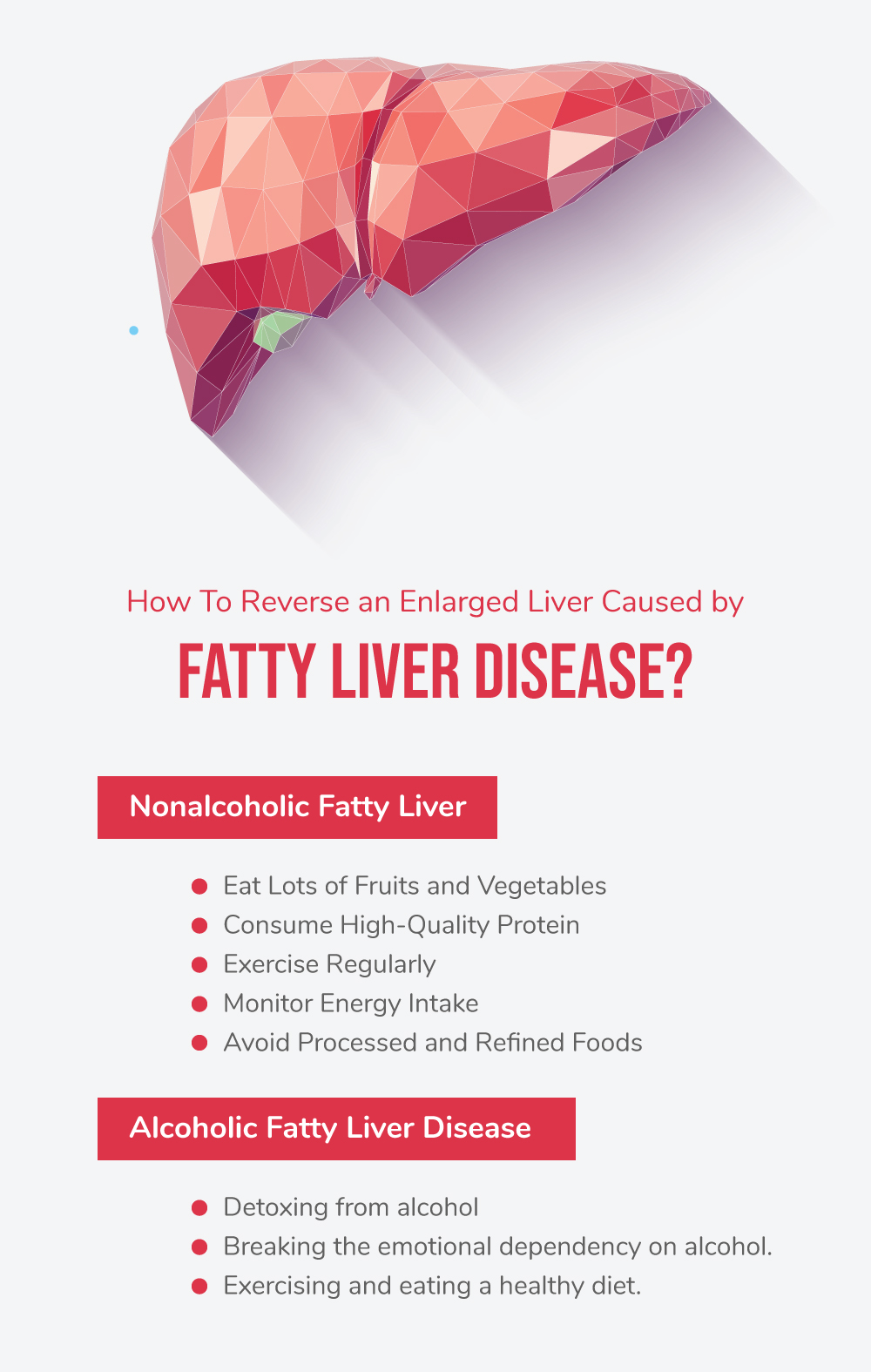
References:

